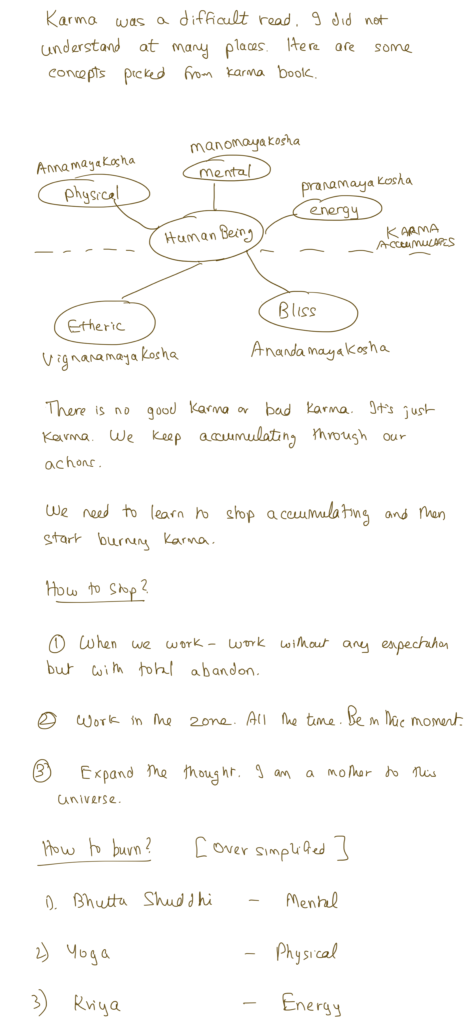
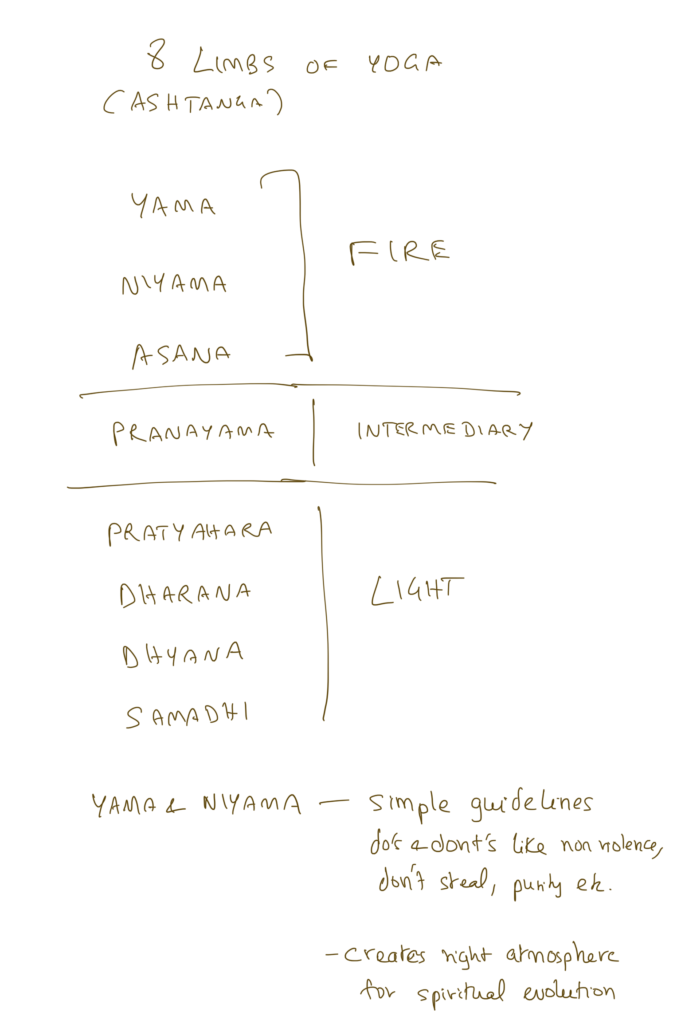
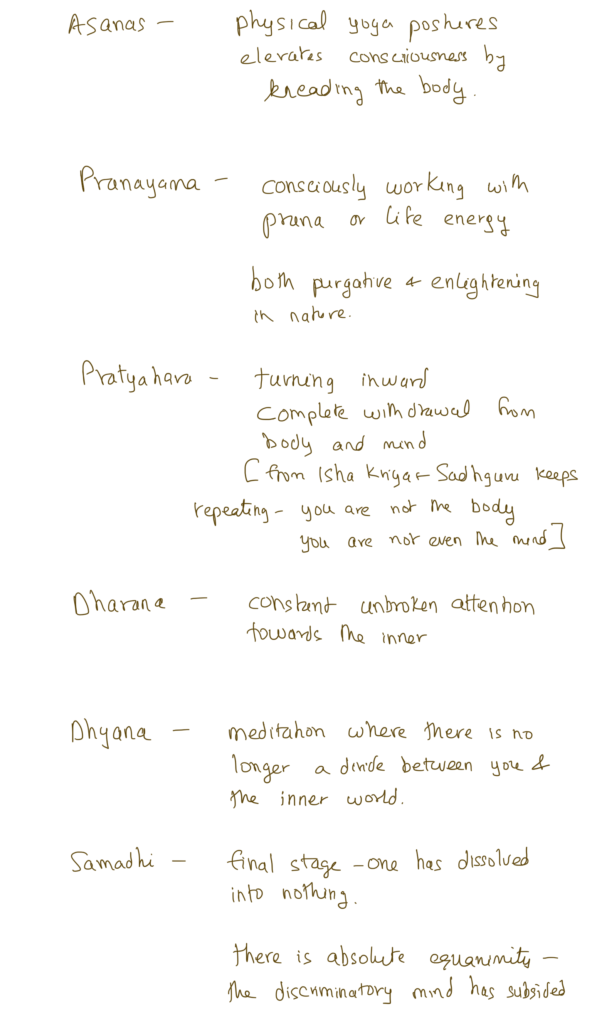



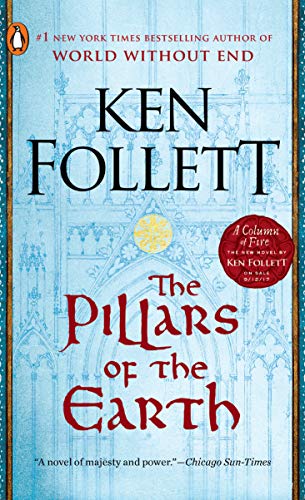
This is the first Ken Follet book I have ever read. Was a fantastic journey.
If you can ignore the raw scenes – the rape and brutal murders of the medieval times – this book will both entertain and give an idea how a Cathedral could have got built.
It is not easy. Building anything great which can stand the test of time and wars. The Great Cathedrals in Europe have withstood all these and more. And they were built in a time without Earth Movers or Machines – but with bare hands.
The story is nicely woven – there are many heroes and villains – and how they all fight it out, the setbacks, the cunning plots – and finally a Cathedral gets built – after it gets burnt down twice and collapses because of a wrong architecture.
I cannot stop appreciating the parallel in my life. It has taken 13 years on one goal – ADDA. It will take another couple of decades or more to make ADDA a product to be used by all Apartment Communities across the world.
Yes had my share of Heroes and Villains so far. More are yet to come – but they will all help in the end goal I have in mind – just like Friar Phillip – who will fight it all out and finally the Cathedral gets erected. What a ride!

My yearly tradition – the first blog post of every year start with a round up of books I read in 2020.
Here is the list from 2010, 11, 12, 13, 14, 15, 16, 17, 18, 2019
Science Fiction
Cixin Liu is my favourite Sci-Fi Author. His Three Body Problem is a master piece. Even if you don’t like Sci-Fi you should read it. It is that good. They should make this a compulsory reading in school.
Supernova Era is another brilliant story on how a supernova explosion kicks off a Radiomagnetic wave which kills all humans above 13 years old. The entire word is now run by 13 year olds and lesser age.
How the world prepares to hand over, and how the kids handle it is the story. I finished listening to this and Corona 2019 happened. I used to joke to the kids at home – all the adults are going to die with Corona and now it is unto you kids to manage.
2. Fall or Dodge in Hell – Neal Stephenson
Neal Stephenson’s books are all a grind. 1000+ pages and once you start this book you get sucked into his world and stay there till you finish the book.
Story is about freezing a human brain. Then they figure out how to digitise it. The story happens in the computer verse and how they interact with the outside world.
Will fry one’s mind alright.
If you don’t know Neal Stephenson – pass this. This book is torture otherwise.
Fiction
3. The Unconsoled – by Kashi Ishiguru
Hmm. I won’t be reading any more of this author’s books. I dont think I have the intellectual development to read this. It was – how would I say – like living in a dream most of the time. Lot of weird stuff. But there were pieces which gave a glimpse into the complexity of human minds. I know of some families / friends – where the child had stopped speaking to their parent / sibling. It was kind of a mystery and here it happens. The porter and the daughter ( protagonists wife later it is revealed ) – do not speak to each other. Even at the very end. Weird but interesting.
Pass this.
4. Us against you by Fredrick Backman
This is the Swedish author I discovered. This is follow up to Beartown ( Highly recommend this ). The story continues after the Beartown climax. Did he stretch this story? It wasn’t as gripping as Beartown but if you loved Beartown you would have to read this.
5. Carrion Comfort by Dan Simmons
I discovered Dan Simmons with Hyperion and stumbled on this book. On audible it is 55+ hours or so. It is a very long story and has some good amount of violence. Loved this one.
6. Okei by Mitsugu Saotome
It is a Japanese novel. Story of a little girl who witnesses the fall of the Japanese empire and how she escapes to US – California. Neutral rating.
7. The Bat by Jo Nesbo
New discovery. This is the first novel by this Norwegian Author. It is about a detective – Harry Hole. Violence, Crime, Investigation – if you love those things – it is a must read. It is the first of a long series – Jo Nesbo is going to take some of my hard earned money.
8. Elantris by Brandon Sanderson
Loved this one. The prince is affected by a virus – which literally makes him into a zombie like thing – and all these affected by the virus are dumped into this place called Elantris from which these dead people are not allowed to come out. It is full of strategy where the protoganists make moves against one another like a chess game. Quite interesting.
9. Theft of 2 Swords
10. Rise of Empire
11. Heir of Novoron by Michael J Sullivan
Loved this series. It has magic, sword fighting, romance, betrayal – all the masala to make it interesting.
Non Fiction
12. The Monk and the lady by Pico Iyer
You get a glimpse of the inner working of the Japanese culture. It was a nice enjoyable journey.
13. Do not talk to Strangers by Malcolm Gladwell
Malcolm Gladwell always takes something well established and turns it around 180 degrees. The audio book was good – it had actual interviews and the production was of high quality.
14. Metamorphosis by Franz Kafka
This book is in the list of High School reading of US Kids. Honestly I did not understand. Perhaps I should have researched more on this, or if an English Teacher had taught in class I would have appreciated more. It is a small book – very highly acclaimed – I didn’t make head or tails of it. I am not the biblio types I guess. Ahem – I am the one who abandoned Walden – to draw a parallel – I am more like the Masala movie watcher types, not into Art films.
Spirituality
15. Death by Sadhguru
On Sunday I picked this book from Crosswords. Started reading Sunday night. Monday morning I didn’t feel like working. Went to Starbucks and read the rest. Bliss. This was pre-covid.
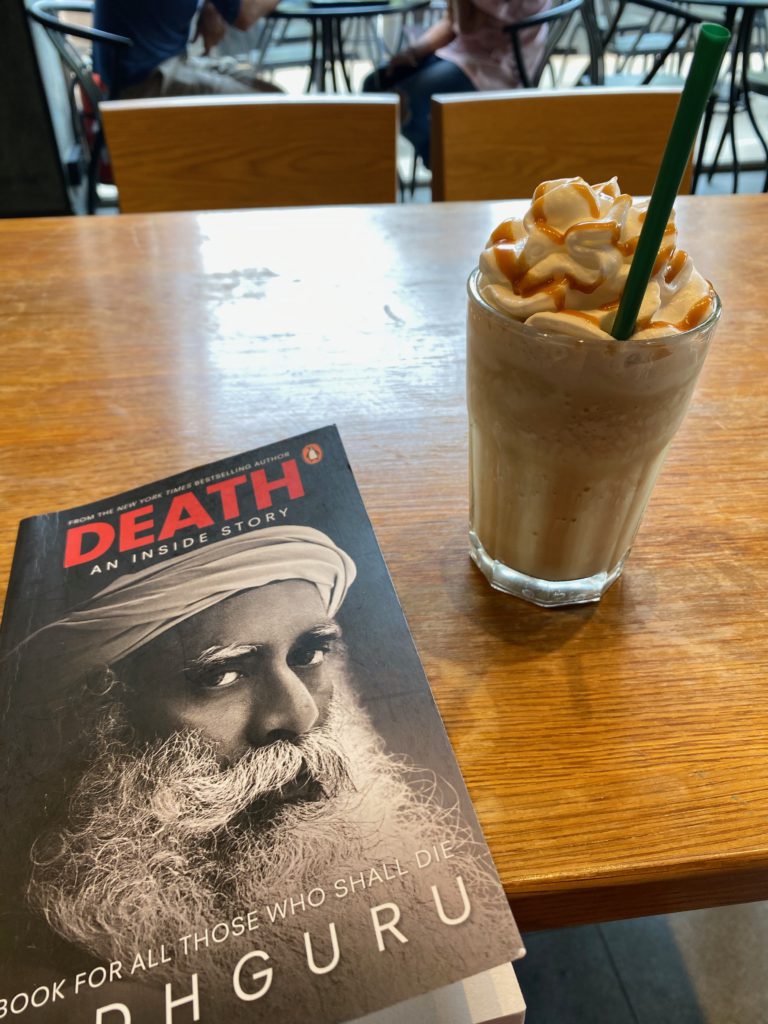
I have referenced this book in the ReadThisFirst section of this blog. Again – should be a mandatory reading for everyone. Gives fresh perspective to life.
Philosophy
16. Mindset by Carol Dweck
Another must read. Wish I read this in my 20s. Along with Alchemist, I would gift this book to youngsters. In fact for the Secret Santa game we played end of 2020, I gifted this book.
I started Einstein – Walter Isacson – but lost interest. Started Ponniyan Selvan – 2. Not being able to cross the critical reading threshold after which I get hooked and sail with it to the end. Hope will complete these in 2021.
Thats it for 2020.
Man’s Search for Meaning by Victor Frankl is a difficult book to read – if you are the types who get sucked into it. I typically read before sleep, and I could not go to sleep while reading this book.
Victor Frankl is a Psychatrist by profession and he and is wife are picked by the Germans and sent to the camps.
The first half is all about Victor’s experience in the Nazi camps. How the prisoners are shepherded from one Camp to another in train – with no knowledge if they are being sent to the Gas Chambers or to another camp.
I strongly recommend this book – will give a new outlook to your life.
“He who has a why to live forcan bear almost any how“
“Mental health is based on a certain degree of tension – between what one has already achieved and what one still has to accomplish“
“What man needs is not a tensionless state but rather striving and struggling for a worthwhile goal“
“Live as if you are living already for the second time and as if you had acted the first time as wrongly as you are about to act now.”
“No one can become fully aware of the very essence of another human being unless he loves him. “
“Man is ready to suffer on one condition – to be sure – that his suffering has a meaning. “
“He is not only unhappy but also ashamed of being unhappy. “
“Lying on your death bed ask your self – was your life meaning full “
This is the book written by Haruki Murakami (thanks to @kgthegreat for pointing my spelling flaw) Nila mentioned to me about this book on Thursday evening, Friday morning I had to plan for a surprise one day trip to Chennai, Saturday found an audio version of this book and Sunday listened to this book on the afternoon return journey. At times it is really amazing how it looks like as if someone sat and planned the whole situation to the very last detail.
I have read only one book of his before – kafka on the shore. He is an amazing fiction writer and paints such crazy images and situations. ( http://kvrlogs.blogspot.com/2008/07/kafka-on-shore.html ). I was very curious to know what he had to talk about when he talks about running!
 |
| Pic from one of his interviews ( http://www.runnersworld.com/article/0,7120,s6-243-410–8908-0,00.html) |
The book starts with him training in Kauai, Hawaii 6 days a week, 10kms a day with 1 rest day. He is putting in these miles in preparation for the New York Marathon. The story weaves in and out of of how he started running ( at the age of 33 around the same age I started running and this is where our similarity ends – I am yet to touch even 10kms, yet to write my first novel and I can’t speak Japanese – neither can he speak Tamil ).
I will list down some interesting facts I still remember.
* He does not walk when he runs in the marathon. He will take a break to stretch his legs – but he never walks as a policy. I am still in the run-walk-run routine, will try to emulate this.
* He has run the ultra marathon – 100 Kms in a day. This very thought is crazy. While a marathon with 42 kms is itself a crazy number – I just could not digest this number. He gives a vivid account on what went through his mind and body on that day when he ran this. How his body resisted and finally something inside him gave away and he could run with no pain. He reaches a meditative state. It is so beautiful to just listen to this part – imagine if you could experience it.
* He talks about how running helps his writing. Makes absolute sense – It is all about Focus, Endurance and Rhythm. This passage is brilliant how he relates his writing to running.
* Our man ran the real “Marathon” – between Athens and the small town of Marathon.
* He has run 1 marathon every year for the past 24 years.
* Best quote from the book “Pain is inevitable but suffering is optional”.
This book is like an adrenaline shot to beginner runners like me.
The above video is from 1967 Disney’s Jungle Book – and this is the best part of this movie in my opinion – smooth animation, great synchronization wtih music and great drama. While watching the movie it does not feel it is a cartoon – what an achievement Disney!
This post is however about the story of Pixar. The founders have a dream – to create a full length animated movie – not hand drawn like Disney’s but animated on a Computer. The founders were all along inspired / coached / educated by Disney’s philosophy on how to make an animated movie with emotion and a story. Pixar wouldnt be Pixar without Disney.
The technology, software, methodology – none existed when they started. This core team of Pixar – which came into existence as part of George Lucas’s Studio and later got sold to Steve Jobs later – were involved in developing some of these methodologies – Z Buffer, Ray Tracing, Shadow on Shadow, Particle animation – Photoshop was originally developed at Pixar and then sold to Adobe.
The second half of the book devotes a chapter each for each of the Pixar’s hits – right till Ratatouille. The story behind how the team was formed, how the idea originated, the legal troubles they fought – you will get tremendous respect for each of these movies.
If you are a fan of animation and Pixar ( /Steve Jobs ) you would love this book. Here are some interesting stories :
* It took almost 2 years of coercing to make Disney approve Toy Story. And mid way they almost scraped it thinking it was not good
* Finding Nemo was laughed at by Eisner ( Disney’s horrible CEO ) – and when it is released Finding Nemo eclipses The Lion King in BO collection ( till then held the all time record for biggest BO collection )
* For Monster’s Inc – Pixar gets sued for copyright violation of the theme – Monster hiding under a closet. Apparently the brave girl, the hairy hero and one eyed side kick were part of a poem – and inadvertently Pixar’s story writers got influenced / inspired ( their defense ). They settled out of court for an undisclosed sum
* Dreamworks was started by a guy who was pissed off by Eisner. He wanted to hurt Disney – so he stole the 2nd movie idea – Bugs Life from Pixar’s director over coffee – and made a clone called – AntZ – similar theme, story line – and released it before Bugs Life. After that Pixar became very closed to outsiders.
* Cars is the worst movie to come out of Pixar – though technically it had many advancements like Ray Tracing in it. Each frame took some 20 hours to render. That is 24 frames per second, and movie is more than an hour. But made hell lot of money for Disney
* There is a very intriguing movie called Princess Mononke that I watched last month – the director is apparently a respected Japanese Animator – Miyazaki – he visits Pixar HQ. They pitch the idea of Incredibles to him and he gives some wise crack I cant recollect now. One of the directors have a wall full of Miyazaki’s characters.
* Pixar went IPO 10 days after the release of Toy Story – Steve Job’s idea – so they had the movie drive their opening day numbers.
Incidentally – my review of Incredibles – written way back in 2004 was the first post of my blog. I for one love Computer Animation and I watch all cartoon movies. If you read this book you will get the answer to the following question – which keeps coming to me whenever I watch a Pixar movie.
How in the LIVING HELL can Pixar manage to make hit after hit after hit.
That is all there is – and this philosophy can be applied to any system.
It has been a while since I finished reading Viral Loop by Adam Penenberg – which traces the story of Internet companies right from Netscape to Facebook and Twitter.
The book is sinking in slowly. Being in the .com business it was exciting and scary to read the history of various startups.
The book covers the journey of the following startups.
Netscape
Hotmail
Ebay
Paypal
Amazon
Hot or not
MySpace
Flickr
Bebo
Ning
Twitter
Facebook
And there is a recurring pattern in all of them
1. The founder is invariably a developer
All these are essentially Web applications – and having the founder-developer part of the nucleus is ideal . Things change at the speed of light – and the founder being at the helm can immediately sense the course corrections that are needed – and correct them himself – instead of having outsourced the core work, or giving instructions to a team of techies and waiting for them to create magic.
3 Cheers to Developers – we are the makers of the world!
Free Tip Warning 🙂 : If you are a developer and evaluating whether to take a Project Management position – turn it down if you have startup aspirations – instead focus on becoming a better developer – some day you can run your own startup.
2. Scaling
Finding the right idea is not enough; finding customers to come to your site is not enough – the site has to scale. This is the single biggest problem faced by all of the above startups. This is a good problem to have – and you should be happy when scaling pains hit you.
It is a tough decision. Should you spend enough resources and build a complex architecture that can scale VS build your product as fast as possible and handle scaling when the time comes. Honestly I do not know the answer. There are pros and cons for both.
The universal answer “Depends” is, as always, the right answer 🙂
3. Viral co-efficient
And they have formed a mathematical equation to explain the Viral phenomenon – why some ideas spread like wild fire. The magic is in the viral co-efficient. As long as it is above a certain number the idea will succeed. This is what Malcolm Gladwell calls it as the Tipping Point.
The book is full of interesting anecdotes. Ebay bought Bill Point and tried to kill Paypal ( which refused to be bought out by Ebay ). In order to promote Bill Point, Ebay made its banner big, had a easy sign up process. Whereas for Paypal – Ebay had a 2 step signup – and made Paypal’s banner smaller and towards the bottom of the page. The community revolted and brought back Paypal.
Once an idea catches up – the community will make sure it stays on the right track.
On the downside – this book glorifies Ning. Perhaps it was written before the downward spiral started for Ning.
Ning had rounds of funding ( Mr.Sharad Sharma joked in one of his speeches that Ning has got more funding than what it took Chandrayaan to be sent to the moon ) – and still Ning is struggling. They recently turned off their free communities and made the entire site a paid one. As an idea Ning is great – but as a business model – they could not sustain. It will be interesting to watch if Ning can turn things around.
We are exactly in the middle of a huge flux. So many questions are yet to be answered :
What is a successful business model for a Web product?
Is Freemium the right model?
Is Banner Ad-Revenue sustainable in the long run?
Is 37 signals / DHH philosophy the right one for a Web Startup?
Perhaps a few years down the lane we will know better. Till then let us keep guessing and keep updating our status and tweeting inane things!
I finished reading Outliers by Malcolm Gladwell a couple of days back and lots of thoughts have been churning in my head. Putting them down as a letter to myself – a letter I would write to the 20 year old Venkat whose career is just beginning ( also applicable to anyone who is in college right now ).
Hi Venkat,
How are you doing? How is your new college? Here are some tips for you.
1. Eat Breakfast.
This is not from Outliers – but my personal advice. I never ate breakfast in college – slept late, woke up late and would miss breakfast. Just by eating your breakfast daily you will get a better grade. Trust me.
2. Work hard.
You see your class topper ace in all the subjects. You think he has got an extra chunk of grey matter. Take a peek into his life – he works hard and works effectively. Takes notes in class, brushes through the chapter before coming to class, and he practices the problems. His parents taught him the right methodology to study, perhaps he had a cousin who taught him early in his school days how to present answers attractively – so he always scored higher than his peers.
Why do, on an average, Asian kids ( Singapore, Korea, Hongkong ) consistently score higher than US/European kids in Mathematics? – It is because they work hard. It takes 20 mins to an hour to crack some concepts – like fractions,probability,calculus etc. They spend that time and effort – it is in their culture to work hard. The kids from Western nations do not have the patience to understand the concept – they never get the fundamentals right – and the hatred towards Mathematics carries on. This is just a crude generalization – however – the finalists in Maths Olympiads from all the countries are all at the same level – all these kids are hard workers.
The yield from a small match box size Rice paddy field is higher than a hectare of wheat field. The rice farmer wakes up very early before the sun rises, makes sure the water level is just right, when sun comes out and water gets hot he should drain away the water, he plucks the weeds one at a time, the harvesting has to happen quick and has to be done with utmost care. Wheat on the other hand needs very little care, can be automated using large farm equipment – and yield is considerably less.
The same happens with the brain. The more effort and more energy you will spend on your brain – the more yield you will get.
Being “gifted” does not guarantee success. They have done a 20 year study on a bunch of high IQ kids in California. They followed their career. What they found is that they did not do any better than the average IQ kids.
So work hard – yes, all the proverbs about working hard are all true.
3. 10,000 hours
After you pass out of college, you will get inspired by Jimmie Hendrix and Santana – and go join a guitar class. But you will drop out after a few months. You cannot give up just like that. Any art, talent takes time. Researchers have found that it takes 10,000 hours of dedicated practice before you can become an expert. They have analyzed the school years of high school music teachers and talented artists who play in the New York Philharmonic Orchestra. The successful artists would have spent 20-30 hours every week of their school life playing their instrument.
Mozart became famous only after 10 years into his career. Beatles played 8 hours at a stretch 7 days week in a shady bar for 3 years before they became world famous. Almost all the famous authors would have produced numerous works before they would have had a best seller. Whatever profession you are choosing – put in the hours – long hours, weekends – so you can quickly reach the 10,000 hours – and then magic will happen – and success will come along with it.
So good luck on your career. Life is hard and complex – and therein lies the beauty of it. If your life is simple or easy – then it will become boring. Whenever you find that your job / career has become easy and you are not learning anything – change your job. Try to keep searching for complexity – you can enjoy life a lot.
PS : I know you are curious to know who your life partner will be – sorry the time travel protocol does not allow me to reveal that 🙂
In summary – it is another brilliant book by Malcolm Gladwell. A little difficult to read – he uses so many names, numbers and you have to skip them while reading. Hi Malcolm here is a suggestion – use footnotes next time – your book will be half its size and will sell well.
Here are some interesting snapshots from the book I still remember.
Ketchup and Spaghetti sauce
This chapter is a follow up to his TED talk where he explains how there is no one perfect “taste” but there are perfect “tastes”. There are so many spaghetti sauce varieties in the market and here is an enterprising person who tries to apply the same model to Ketchup and tries to go against Heinz – the market leader. However he is not as successful.
What I learnt from this chapter is that each product / market is different – what works in one will not work in another. When the inventor of “tastes” model was asked why it did not work for Ketchup he shrugged off saying “Ketchup is different”.
Enron fiasco
This is an interesting chapter where Gladwell argues that Enron never hid the dismal finances it had. It was all out in the open in the thousands of pages of SEC filings it did. So when the CEOs were taken to trial it was pronounced that they did not disclose the truth – the judge was way off the mark. Yes, they were responsible for the mess that got created and were mute spectators to it – however they never hid the information. The point he tries to make is – it is difficult or at times even impossible to pick the “real information” hidden beneath the mountain of information.
How are we going to solve the problem of information over load? Is there another Enron which is quietly filing its annual reports with disaster hidden somewhere deep inside?
Talent myth
This is about McKinsey’s philosophy of hiring the best and staffing your company with them. This is what they advised Enron too. During performance appraisal, they split the employees into A,B and C groups. A – are the best of the best – the ones who got promoted got a huge bonus. B – are the mediocre ones – made a decent salary and encouraged to become As. Cs are to be fired. They hired from all Ivy leagues, had fancy power points, ideas, business models – and the hot shots killed the company in the end.
In contrast, Walmart, P&G etc. do not hire hotshots, have a “mediocre” performance appraisal policy, conventional salary structure – and are still around and will be around for another century.
So, for big enterprises – perhaps the uber talents are not good. They have their place in the ecosystem and they would thrive well in smaller firms that are trying to become big, research and development companies, startups etc.
The above is just a snapshot of the chapters in the book. There are more interesting stories – dog training, hair dye market, FBI investigators on serial killers – and it breaks all the myths/stereotypes/conventions.
Very entertaining and very informative. Thumbs up!